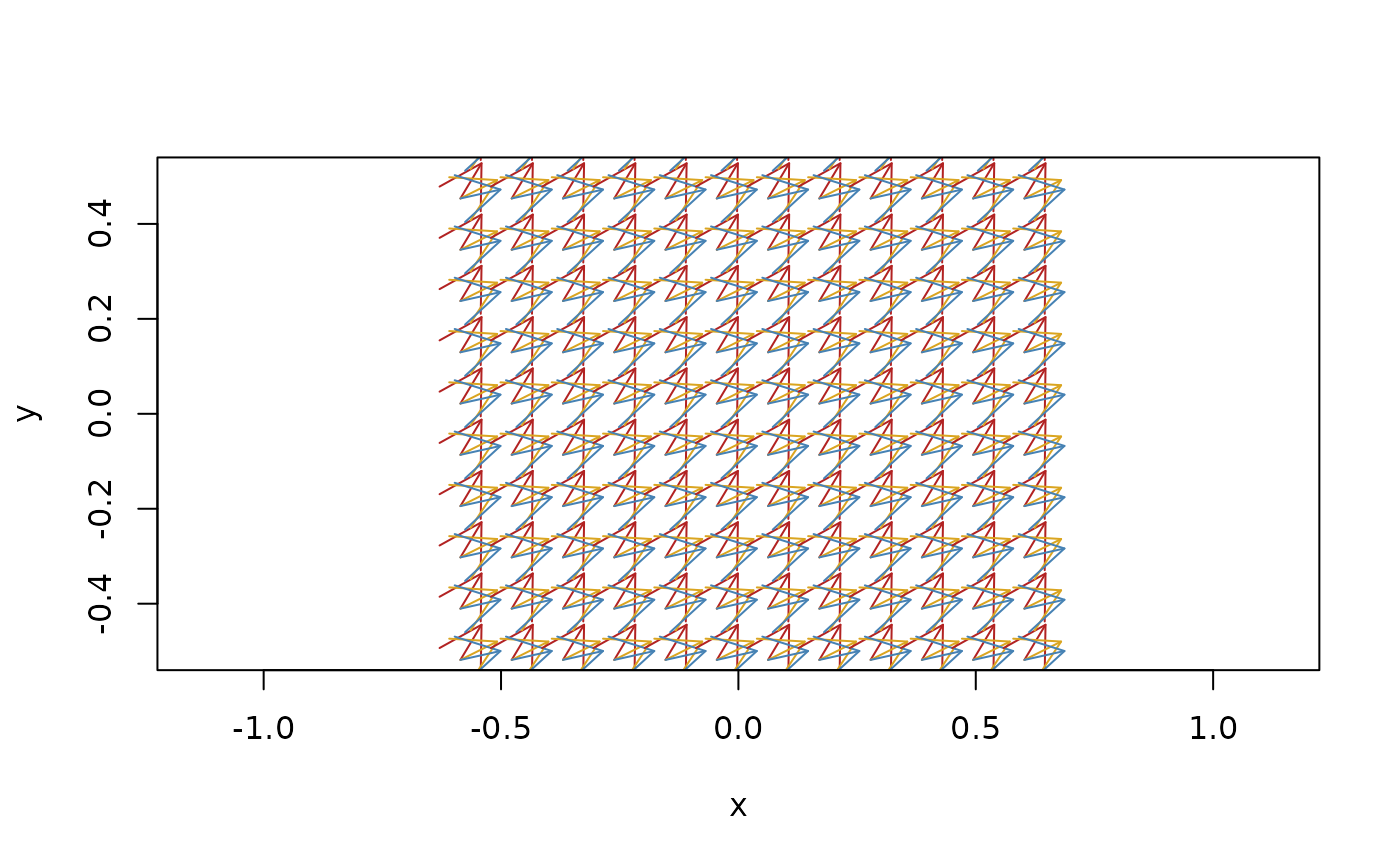Directions are vectors where you have forgot about the length. They are used much in the same way as normalised vectors (vectors with a magnitude of 1), but since vectors cannot be normalized while maintaining exactness it is preferable to simply have a data type where you ignore the magnitude. The direction can be flipped by taking the negative. 2 dimensional directions can be considered as angles and can thus be sorted and compared. The same is not true for directions in 3 dimensions.
Arguments
- ...
Various input. See the Constructor section.
- default_dim
The dimensionality when constructing an empty vector
- x
A direction vector or an object to convert to it
- d1, d2
direction vectors to relate to
Constructors
2 and 3 dimensional directions
Providing 2 or 3 numerics will create directions with the given delta values. (2 numerics will give 2 dimensional directions, 3 will give 3 dimensional directions).
Providing vectors will construct directions as the direction of the given vectors.
Providing lines will construct directions as the direction of the given lines.
Providing rays will construct directions as the direction of the given rays.
Providing segments will construct directions as the direction of the given segments.
Examples
# Constructions
d <- direction(sample(10, 3), sample(10, 3))
d
#> <2D directions [3]>
#> [1] <dx:3, dy:5> <dx:2, dy:1> <dx:9, dy:2>
plot(d, col = c("firebrick", "goldenrod", "steelblue"))
 # flipping the direction
-d
#> <2D directions [3]>
#> [1] <dx:-3, dy:-5> <dx:-2, dy:-1> <dx:-9, dy:-2>
# Relations
d[1] < d[2]
#> [1] FALSE
min(d)
#> <2D directions [1]>
#> [1] <dx:9, dy:2>
sort(d)
#> <2D directions [3]>
#> [1] <dx:9, dy:2> <dx:2, dy:1> <dx:3, dy:5>
between(d[1], d[2], d[3])
#> [1] TRUE
# flipping the direction
-d
#> <2D directions [3]>
#> [1] <dx:-3, dy:-5> <dx:-2, dy:-1> <dx:-9, dy:-2>
# Relations
d[1] < d[2]
#> [1] FALSE
min(d)
#> <2D directions [1]>
#> [1] <dx:9, dy:2>
sort(d)
#> <2D directions [3]>
#> [1] <dx:9, dy:2> <dx:2, dy:1> <dx:3, dy:5>
between(d[1], d[2], d[3])
#> [1] TRUE